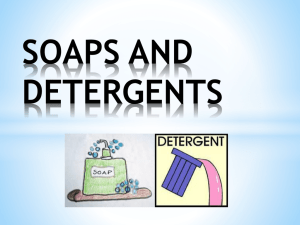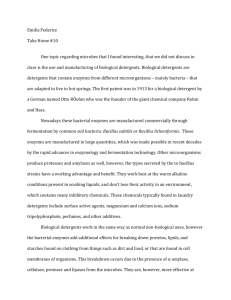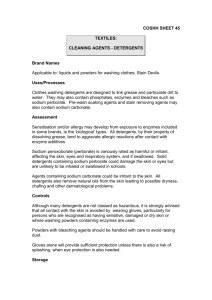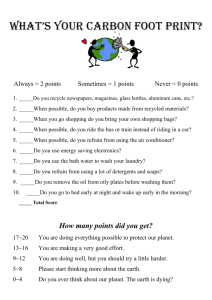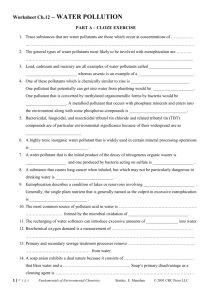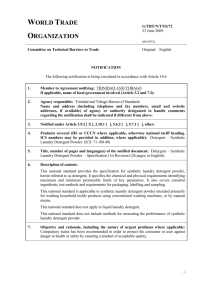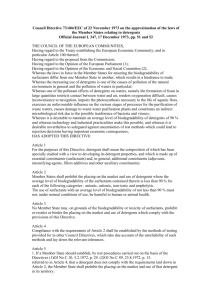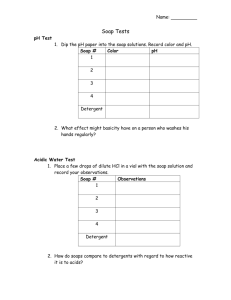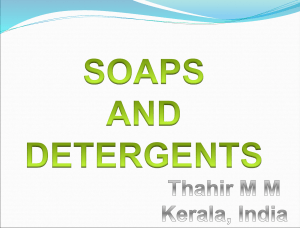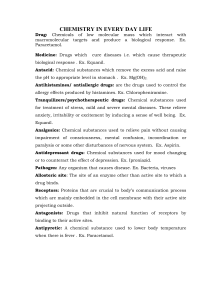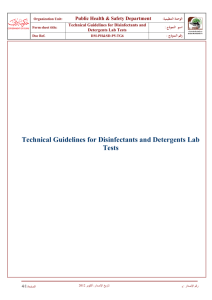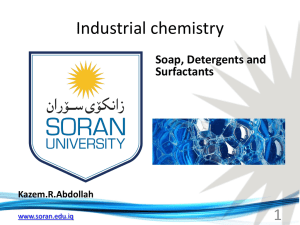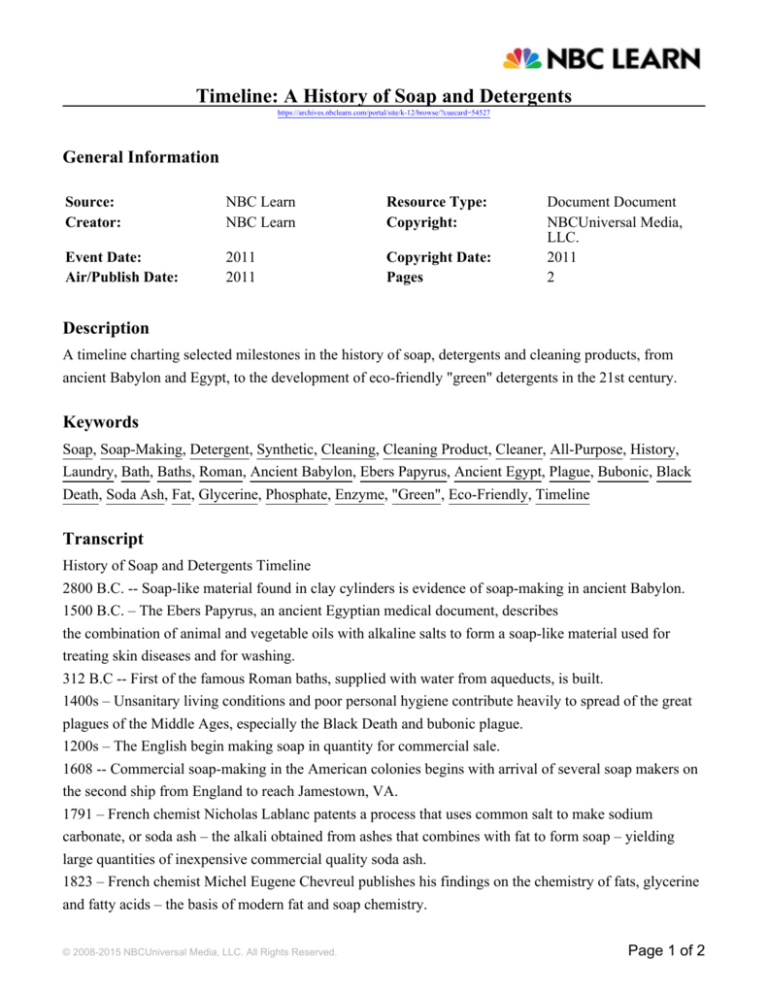
Timeline: A History of Soap and Detergents
https://archives.nbclearn.com/portal/site/k-12/browse/?cuecard=54527
General Information
Source:
Creator:
NBC Learn
NBC Learn
Resource Type:
Copyright:
Event Date:
Air/Publish Date:
2011
2011
Copyright Date:
Pages
Document Document
NBCUniversal Media,
LLC.
2011
2
Description
A timeline charting selected milestones in the history of soap, detergents and cleaning products, from
ancient Babylon and Egypt, to the development of eco-friendly "green" detergents in the 21st century.
Keywords
Soap, Soap-Making, Detergent, Synthetic, Cleaning, Cleaning Product, Cleaner, All-Purpose, History,
Laundry, Bath, Baths, Roman, Ancient Babylon, Ebers Papyrus, Ancient Egypt, Plague, Bubonic, Black
Death, Soda Ash, Fat, Glycerine, Phosphate, Enzyme, "Green", Eco-Friendly, Timeline
Transcript
History of Soap and Detergents Timeline
2800 B.C. -- Soap-like material found in clay cylinders is evidence of soap-making in ancient Babylon.
1500 B.C. – The Ebers Papyrus, an ancient Egyptian medical document, describes
the combination of animal and vegetable oils with alkaline salts to form a soap-like material used for
treating skin diseases and for washing.
312 B.C -- First of the famous Roman baths, supplied with water from aqueducts, is built.
1400s – Unsanitary living conditions and poor personal hygiene contribute heavily to spread of the great
plagues of the Middle Ages, especially the Black Death and bubonic plague.
1200s – The English begin making soap in quantity for commercial sale.
1608 -- Commercial soap-making in the American colonies begins with arrival of several soap makers on
the second ship from England to reach Jamestown, VA.
1791 – French chemist Nicholas Lablanc patents a process that uses common salt to make sodium
carbonate, or soda ash – the alkali obtained from ashes that combines with fat to form soap – yielding
large quantities of inexpensive commercial quality soda ash.
1823 – French chemist Michel Eugene Chevreul publishes his findings on the chemistry of fats, glycerine
and fatty acids – the basis of modern fat and soap chemistry.
© 2008-2015 NBCUniversal Media, LLC. All Rights Reserved.
Page 1 of 2
1861 – Belgian chemist Ernest Solvay’s process, using common table salt, or sodium chloride, to make
soda ash, further reduces the cost and increases quality and quantity of soda ash for soap manufacturing.
1916 – First synthetic detergent developed in Germany in response to shortage of fats for making soap
during World War I.
1930s – Production of synthetic household detergents begins in U.S..
1940s – Synthetic detergents advanced by adding phosphate compounds that improve detergent
performance and ability to clean heavily-soiled laundry.
1953 – Sales of synthetic detergents in U.S. surpass those of soap.
1950s – Development and marketing of automatic dishwasher powders; liquid laundry, dishwashing,
fabric softeners and all-purpose cleaners; detergents with bleach.
1960s – Development and marketing of pre-wash soil and stain removers; laundry powders with enzymes;
enzyme presoaks.
1970s – Development and marketing of liquid hand soaps; fabric softener sheets; detergent-fabric softener
combinations.
1980s – Development and marketing of cold-water detergents; liquid dishwasher detergents; concentrated
laundry detergents.
1990s – Development and marketing of super-concentrated powder and liquid detergents and fabric
softeners; gel dishwasher detergents.
2000s – Development and marketing of disposable cleaning wipes; dissolvable detergent packets; “green”
and eco-friendly detergents.
© 2008-2015 NBCUniversal Media, LLC. All Rights Reserved.
Page 2 of 2

